Hearing Aids And Equipment
There are many types of hearing aids and items of equipment that can help if you experience hearing loss.
The type most suitable to you will depend on the kind of hearing loss you have.
Some aids will be available on the NHS but you may also wish to consider consulting a private audiologist.
What are the different types of hearing aids?
Behind The Ear (BTE)
A behind the ear aid has two parts – the main part goes behind the ear. This connected to a tube or microtube to an ear mould, tip or cone that sits inside your ear.
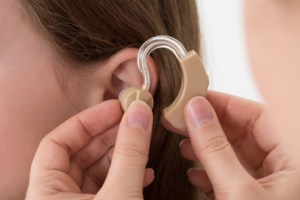
Receive In The Canal (RIC)
A receive in the canal aid is like a BTE aid but smaller. An almost invisible wire connects the microphone to the other par, which goes inside your ear canal.
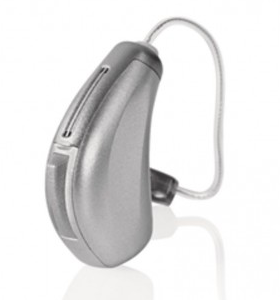
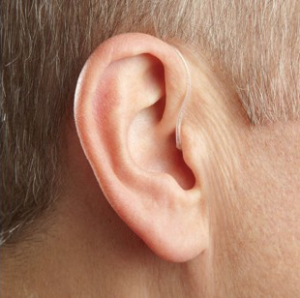
In The Ear (ITE)
An in the ear aids sits completely inside your ear.
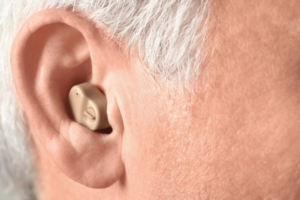
Completely In The Can (CIC)
A completely in the can hearing aid goes deep inside your ear canal, making it invisible. This is the most discreet kind of hearing aid.
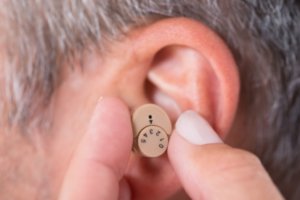
The audiologist will recommend the most suitable hearing aid for you when they carry out the hearing test.
Surgically implanted devices
Some people cannot use ordinary hearing aids because their type of impairment means that sounds cannot get through to the inner ear. In these situations there are other devices that can help, by transporting the sound in another way. The two most common examples are:
Bone-Anchored Hearing Aid (BAHA) – works by conducting the sound through your skull bone. You will need to have an operation for one to be fitted.
Some people find a BAHA more comfortable because they do not have an ear mould. The NHS will usually only provide the bone anchored hearing aids to people who are not able to wear conventional hearing aids that use an ear mould.
There are bone-conduction hearing aids that work in the same way which are not surgically implanted.
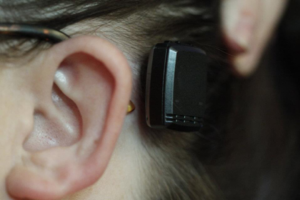
Cochlear Implant (CI) is another kind of device that needs to be surgically implanted. It helps people with severe or profound hearing loss to hear and understand speech by completely by-passing the normal hearing mechanism and stimulating the auditory nerve directly.
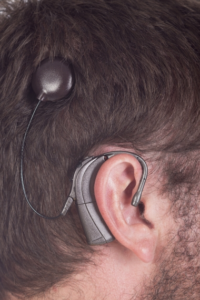
Non-surgically implanted bone conduction hearing devices
Surface Bone Conduction (non-surgically implanted): some varieties of these hearing devices receive the sound with a microphone and change the signal into vibrations. With these vibrations, the inner ear can be stimulated allowing patient to hear when the normal channel of the ear is not present. In this fashion, sound waves can bypass the congenital lack of an ear canal and eardrum and stimulate the normally functioning hearing nerve directly. These devices can be used from several months of age onward. The hearing received may allow for normal speech, language and brain development. Some children use this technology until an ear canal is made while others continue to use this technology throughout life if they are not good candidates for creation of an ear canal.
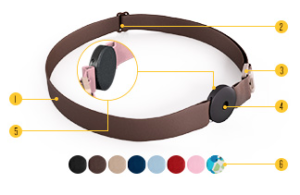
Image from https://www.cochlear.com
Features
- Elasticated headband (free from natural rubber latex)
- Universal slider
- Built-in safety release
- Snap connector
- Baha SoftWear Pad
- Colour and pattern options
Private or NHS?
NHS
NHS hearing aids are free at the point of issue. There are a range of aids to suit different types of hearing loss. Your audiologist will work with you to find the best choice.
If you want to get your hearing tested through the NHS, the first step is to visit your GP. If your GP thinks that you might have hearing loss, they will refer you to see an NHS audiologist.
Private
A private audiologist might offer more options, including access to newer technology or a broader range of suppliers and devices. They can talk you through what is best for you and what would be included in the cost.
Most private audiologists provide free hearing tests, though you will need to pay later if you carry on using their services. Some people find they get through the process more quickly when they choose a private audiologist.
Do I need insurance for hearing aids?
If you have purchased your hearing aids privately, we recommend that you insure your hearing is covered for loss when you are away from home.
Most dispensers can arrange insurance for you cover for you, but you might be able to include your hearing aids in your home contents. The best advice is to discuss insurance cover with your hearing aids audiologist or your home insurer.
Some companies offer stand-alone insurance specifically for hearing aids so it is recommended that you search on-line.
If I paid for my hearing aids privately, would they be exempt from VAT?
No. The cost of standard hearing aids are excluded from VAT relief. Certain specialist equipment designed for people with severely defective hearing which do not constitute ‘hearing aids’ as the term is generally used may be zero-rated. These include:
-
- Tinitus masters – earpieces which generate a constant noise to mask the effect of ringing in the ears.
- Induction loops – however public address systems will not quality for VAT relief
- TV hearing aids – amplifiers and earpieces which may be connected to a TV set, radio or hi-fi to enable a person with hearing loss to hear the sound without turning up the volume.
- Bone implanted attachments – these are fixed behind the ear of a disabled person to allow sound conjunction through the bone rather than via the middle ear.
What else can help my hearing?
As well as hearing aids you can purchase assistive equipment to help you around the home. These include:
- Finding the right telephone
- Alerts – door bells or phones – flashing lights or vibrating alarms
- Alarm clocks – vibrating or flashing lights
- Paging system – You can set these to get alerts from a range of difference services like a smoke alarm or alarm clock as well as the doorbells
- FM systems (personal listeners)
- Hearing loops
- Streamers
- Bluetooth neckloop
- Headphones
See the RNID website with chosen partner Connevans for information on assistive hearing equipment
